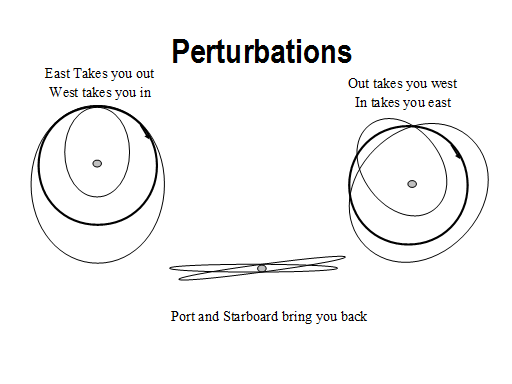
NOTES:
If you apply a thrust eastward (in the direction of your orbit), you put yourself in a higher orbit (you move Out)
If you apply a thrust Westward (against the direction of your orbit), you put yourself in a lower orbit (you move In)
If you apply a thrust outward, you put yourself in a slower orbit, so you move West relative to everything else in your old, faster orbit
If you apply a thrust inward, you put yourself in a faster orbit and you move East relative to everything else in your old, slower orbit
If you thrust to the left or right, you move to an orbit that is at an angle to your original orbit, but which intersects your original orbit at two points, one of which is the point at which you applied the thrust - hence you come back to where to started after one orbit.
The "old saying" compressed all that knowledge into a few sentences.
